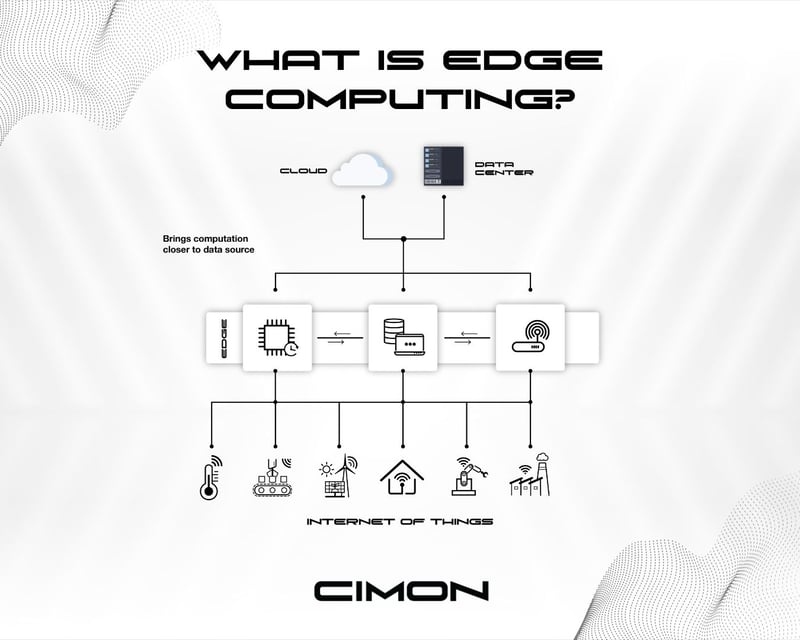What Is Edge Computing and Why Is It Important Within Industrial Automation?

Edge computing is a distributed computing model that allows users to process large data quickly at its source near the edge of the network, reducing the burden on cloud servers. Rather than replacing traditional cloud or server-based data management, edge computing offers a complementary approach that increases efficiency by reducing data transfer latency and enhancing bandwidth, security, and scalability. Additionally, edge computing fosters real-time analytics, data filtering, and decision-making, thereby increasing the performance and efficiency of industrial automation systems.
Within the framework of industrial automation, edge computing dovetails with various technologies such as SCADA, PLCs, IPCs, HMIs, to name a few. These technologies, functioning as edge devices, can communicate with each other and with central servers or clouds. They can work simultaneously, independently or in a distributed manner.
Edge devices have the capability to run applications or algorithms custom-built for processes like data compilation, compression, encryption, filtration, and evaluation, among others. Edge computing also facilitates interaction between devices and controllers, applying data processed at the network's edge.
The Benefits of Edge Computing in Industrial Automation
Efficiency: Edge computing allows organizations to process large volumes of data rapidly, right where it's collected. This strategy is more efficient than sending all collected data to a far-off cloud or datacenter, a process that can result in significant network lag and performance issues.
Improved Response Times: Edge computing can help industries process data faster and more reliably, ideally in real-time. Edge computing enables devices close to the network's edge to immediately alert relevant personnel and equipment about mechanical failures, security threats, and other critical events, facilitating swift corrective action.
Data Sovereignty: When handling customer data—collection, processing, storage, and utilization—organizations must comply with specific data privacy regulations of the country or region where the data is collected or stored. Edge computing can assist businesses in maintaining compliance with local data sovereignty regulations by processing and storing data where it is collected.
Cost Efficiency: Edge computing can help businesses cut their IT expenses by processing data locally rather than relying on cloud services. This not only reduces costs associated with cloud processing and storage but also trims the overall cost of data transmission by eliminating unnecessary data at the point of collection.
The Future of Edge Computing
As industrial automation evolves, the relevance of edge computing is likely to increase. Today, hybrid models integrating both edge and cloud computing are the most prevalent, with edge computing primarily used for initial tasks like data filtering and classification.
As we look ahead, we can anticipate the development of more edge computing use cases and a shift towards truly decentralized controlling technologies. As processes become more streamlined and defined, edge computing will likely play an increasingly crucial role in our automated future.

.jpg)

